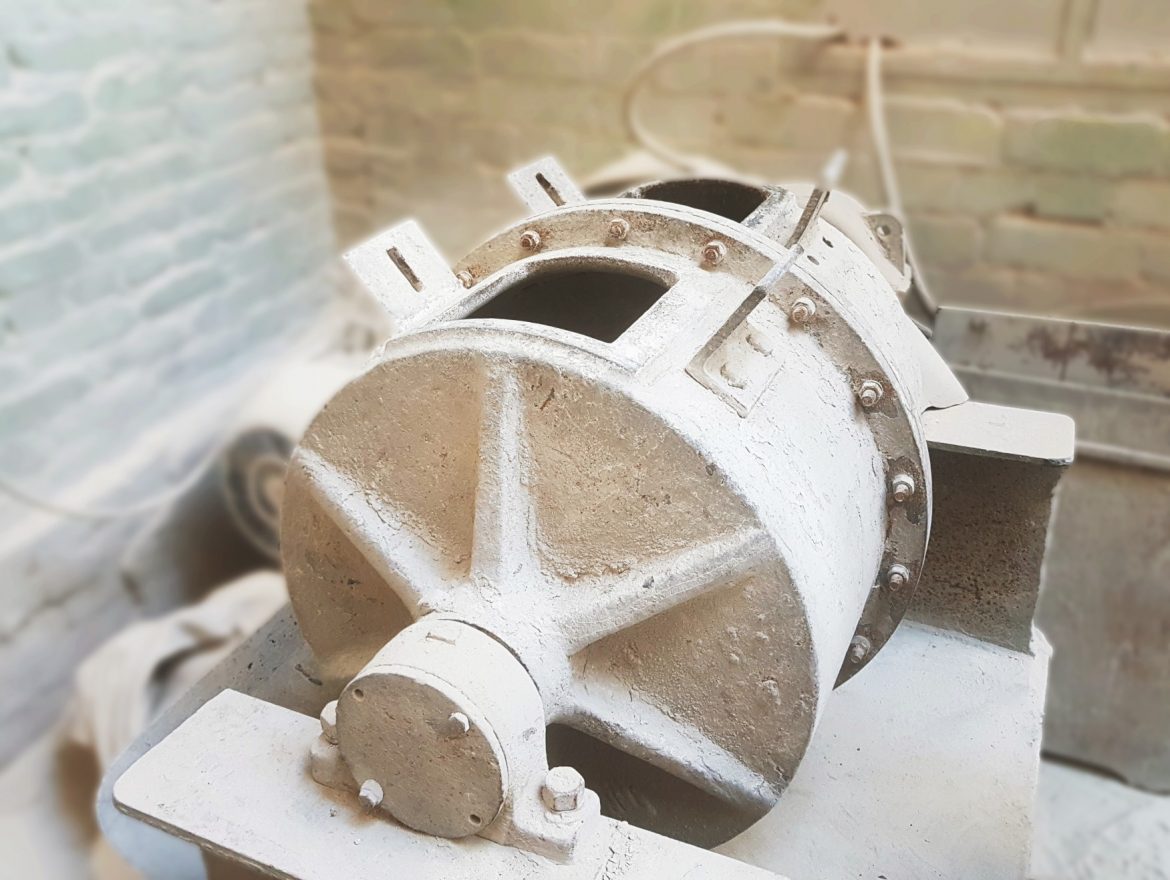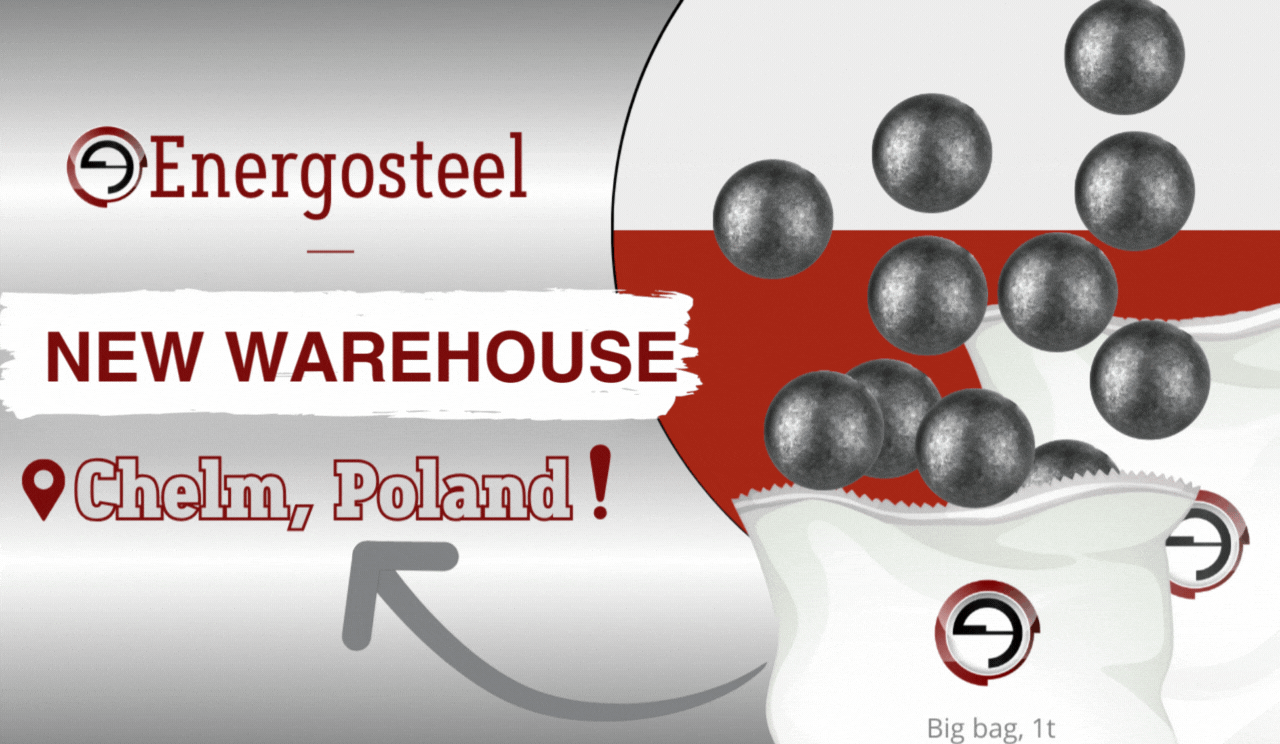We have given repeatedly in our publications the examples and the mathematical calculations disproving the prevailing opinion the need to use cast iron cylpebs for finer material grinding. In this article, we will provide you with the comparing work results of two types the grinding media – cast iron cylpebs of Ukrainian production and 35/40mm steel grinding balls by ENERGOSTEEL production. Let’s look at the course of these tests in more detail.
We had the opportunity to conduct comparative tests in a laboratory mill installed on the production site of one of our customers at the end of November 2019. The mill drum divided by a “blank” partition into two equal chambers. 60 kilograms of grinding media loaded into each chamber. The 20 kilograms of material loaded into each chamber observing the proportion of grinding media to the material to be ground. The crushed material was preliminary grinding limestone. The material size was not more than 20 mm. Grinding occurred within 60 minutes. The grinding type was a dry grinding type.
The crushed material samples weighing 25 grams have been selected from each chamber after 1 hour of the mill operation. After that, the selected samples have been sieved on a 0.09 sieve. All remaining product over the grate has been weighed. The sieve residue percentage has been calculated, based on the weighing results.
So, the residue on the sieve was 21.92% during the 27x32mm cast-iron cylpebs use. A similar indicator of the 35/40 mm steel grinding balls work in equal proportions was 11.78%, which is 50% better than grinding fineness in comparison with the cylpebs work!
To summarize, we have debunked again an established myth about the quality work of cast-iron cylpebs and have proved the steel grinding balls use is more effective for achieving the material fine grinding.







